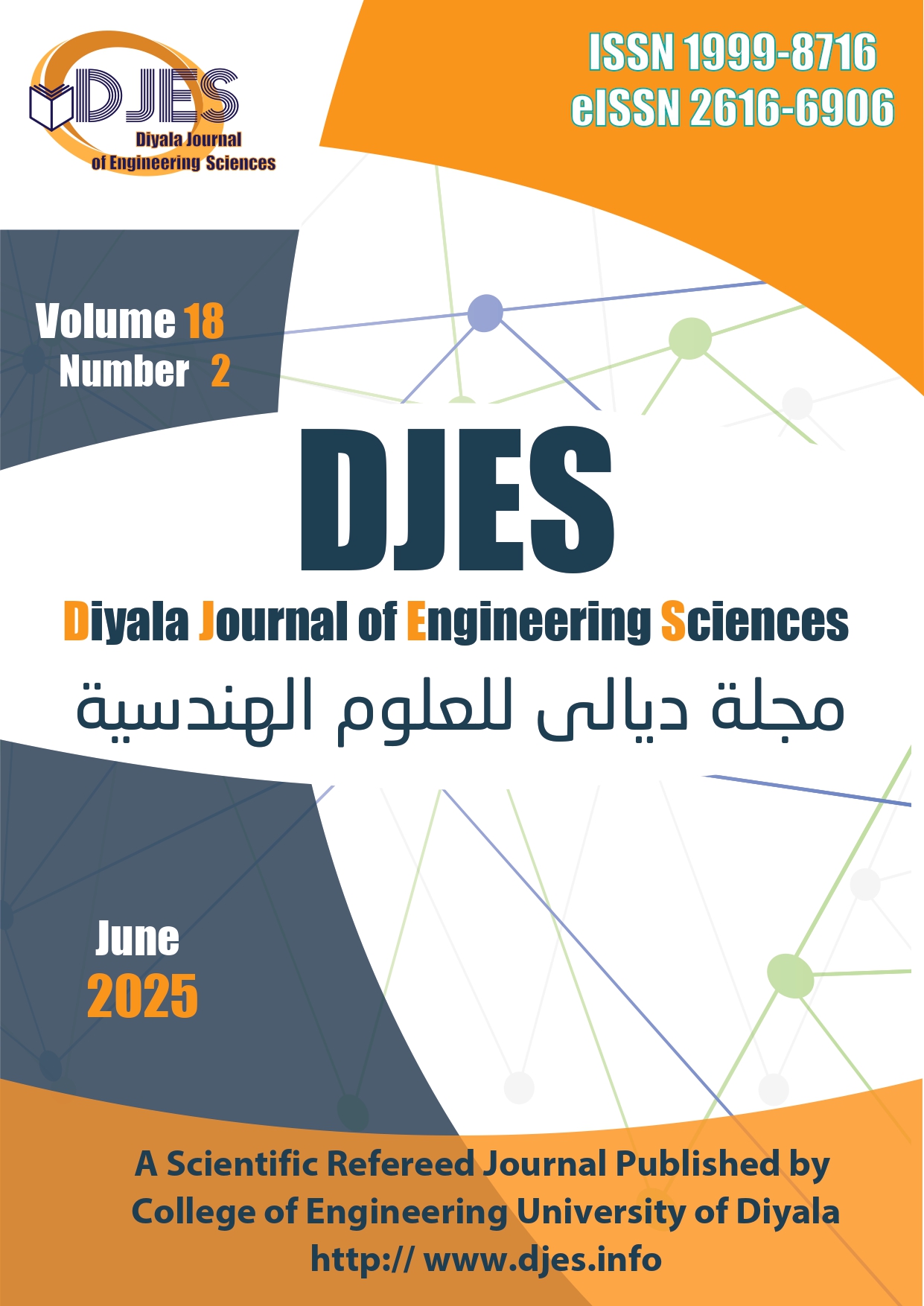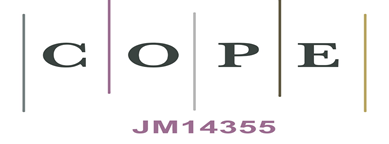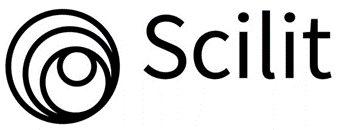Fiber Laser-Assisted Synthesis of MoS2 Nanomaterials for Enhanced Anticancer and Antibacterial Activity
DOI:
https://doi.org/10.24237/djes.2024.18205Keywords:
Optical fibers, Nanomaterials, Antibacterial effectAbstract
Molybdenum disulfide (MoS2) is a promising nanomaterial with a wide range of applications. Its outstanding properties, good biocompatibility, and band gap characteristics allowed it to be used in biosensing, electronics, optoelectronics, and biological and medical applications. Furthermore, Biopolymers, including chitosan and PEG, are regarded as the most promising materials in the medical domain. Therefore, in this work, MoS2, MoS2-CS, and MoS2-PEG nanocomposite materials are generated using a laser ablation process. A comprehensive examination of the manufactured composites was performed using X-ray diffraction analysis (XRD), transmission electron microscopy (TEM), ultraviolet-visible spectroscopy (UV–Vis), energy Dispersive X-ray (EDX), Raman spectroscopy, and Fourier transform infrared spectroscopy (FTIR) to validate the quality and content of the newly prepared composites. Based on the results, MoS2 NPs show a minimum average size of 20 nm generated using 127.3, 250mm/s, 3 minutes irradiation. Furthermore, the recorded average size of MoS2-CS and MoS2-PEG nanocomposite were 10.5 nm and 7.8 nm, respectively. The MoS2-CS hybrid nanocomposite showed the highest antibacterial activity against E. coli bacteria, while MoS2-CS and MoS2-PEG showed the highest antibacterial activity against S.aureus bacteria compared to pure MoS2 NPs. The anticancer analysis demonstrated that the MoS2-CS nanocomposite presented the highest cytotoxic effect against the A549 cell compared to MoS2 and MoS2-PEG.
Downloads
References
[1] J. Lu et al., “Molybdenum disulfide nanosheets: From exfoliation preparation to biosensing and cancer therapy applications,” Oct. 01, 2020, Elsevier B.V. doi: 10.1016/j.colsurfb.2020.111162.
[2] L. Ma et al., “MoS2 nanosheets vertically grown on carbonized corn stalks as lithium-ion battery anode,” ACS Appl Mater Interfaces, vol. 10, no. 26, pp. 22067–22073, 2018.
[3] L. Shi, L. Yang, Z. Wu, W. Xu, J. Song, and W. Guan, “Adenosine signaling: next checkpoint for gastric cancer immunotherapy?,” Int Immunopharmacol, vol. 63, pp. 58–65, 2018.
[4] X. Zhang and Y. Liang, “Nickel hydr (oxy) oxide nanoparticles on metallic MoS2 nanosheets: a synergistic electrocatalyst for hydrogen evolution reaction,” Advanced Science, vol. 5, no. 2, p. 1700644, 2018.
[5] A. Zhang et al., “An efficient and self-guided chemo-photothermal drug loading system based on copolymer and transferrin decorated MoS2 nanodots for dually controlled drug release,” Chemical Engineering Journal, vol. 342, pp. 120–132, 2018.
[6] H. Liu et al., “MoS 2 nanosheets with peroxidase mimicking activity as viable dual-mode optical probes for determination and imaging of intracellular hydrogen peroxide,” Microchimica Acta, vol. 185, pp. 1–9, 2018.
[7] M. Karami and O. M. Jazani, “The Progress of Molybdenum Disulfide 2D Nanosheets as Bionanocarriers for Drug Delivery Systems: A Groundbreaking Approach with Multiple Therapeutic Applications,” J Inorg Organomet Polym Mater, pp. 1–30, 2025.
[8] A. M. Allahverdiyev, K. V. Kon, E. S. Abamor, M. Bagirova, and M. Rafailovich, “Coping with antibiotic resistance: combining nanoparticles with antibiotics and other antimicrobial agents,” Expert Rev Anti Infect Ther, vol. 9, no. 11, pp. 1035–1052, 2011.
[9] M. Kukkar, S. K. Tuteja, P. Kumar, K.-H. Kim, A. S. Bhadwal, and A. Deep, “A novel approach for amine derivatization of MoS2 nanosheets and their application toward label-free immunosensor,” Anal Biochem, vol. 555, pp. 1–8, 2018.
[10] B. J. Carey et al., “Two solvent grinding sonication method for the synthesis of two-dimensional tungsten disulphide flakes,” Chemical Communications, vol. 51, no. 18, pp. 3770–3773, 2015.
[11] G. Cunningham et al., “Solvent exfoliation of transition metal dichalcogenides: dispersibility of exfoliated nanosheets varies only weakly between compounds,” ACS Nano, vol. 6, no. 4, pp. 3468–3480, 2012.
[12] R. J. Smith et al., “Large‐scale exfoliation of inorganic layered compounds in aqueous surfactant solutions,” Advanced materials, vol. 23, no. 34, pp. 3944–3948, 2011.
[13] J. N. Coleman et al., “Two-dimensional nanosheets produced by liquid exfoliation of layered materials,” Science (1979), vol. 331, no. 6017, pp. 568–571, 2011.
[14] L. Muscuso, S. Cravanzola, F. Cesano, D. Scarano, and A. Zecchina, “Optical, vibrational, and structural properties of MoS2 nanoparticles obtained by exfoliation and fragmentation via ultrasound cavitation in isopropyl alcohol,” The Journal of Physical Chemistry C, vol. 119, no. 7, pp. 3791–3801, 2015.
[15] G. Pagona, C. Bittencourt, R. Arenal, and N. Tagmatarchis, “Exfoliated semiconducting pure 2H-MoS2 and 2H-WS2 assisted by chlorosulfonic acid,” Chemical Communications, vol. 51, no. 65, pp. 12950–12953, 2015.
[16] A. O’Neill, U. Khan, and J. N. Coleman, “Preparation of high concentration dispersions of exfoliated MoS2 with increased flake size,” Chemistry of Materials, vol. 24, no. 12, pp. 2414–2421, 2012.
[17] K. S. Khashan, A. A. Hadi, and I. F. Hasan, “Nanosecond Laser-Supported Decoration of Titanium Oxide Nanoparticles on Multiwalled Carbon Nanotubes,” Plasmonics, vol. 19, no. 1, pp. 301–310, 2024.
[18] K. S. Khashan, B. A. Badr, G. M. Sulaiman, M. S. Jabir, and S. A. Hussain, “Antibacterial activity of Zinc Oxide nanostructured materials synthesis by laser ablation method,” in Journal of physics: conference series, IOP Publishing, 2021, p. 012040.
[19] N. Acacia, F. Barreca, E. Barletta, D. Spadaro, G. Currò, and F. Neri, “Laser ablation synthesis of indium oxide nanoparticles in water,” Appl Surf Sci, vol. 256, no. 22, pp. 6918–6922, 2010.
[20] L. Zhou, H. Zhang, H. Bao, G. Liu, Y. Li, and W. Cai, “Onion-Structured Spherical MoS2 Nanoparticles Induced by Laser Ablation in Water and Liquid Droplets’ Radial Solidification/Oriented Growth Mechanism,” Journal of Physical Chemistry C, vol. 121, no. 41, pp. 23233–23239, Oct. 2017, doi: 10.1021/acs.jpcc.7b07784.
[21] M. Kanazawa, P. Koinkar, K. I. Murai, T. Moriga, and A. Furube, “Effects of the solvent during the preparation of MoS2 nanoparticles by laser ablation,” in Journal of Physics: Conference Series, Institute of Physics Publishing, Sep. 2019. doi: 10.1088/1742-6596/1230/1/012100.
[22] S. Moniri, A. H. Mohammad Zadeh, A. H. Ramezani, and M. R. Hantehzadeh, “Influence of laser wavelength on the optical and structural properties of MoS2 nanoparticles prepared via laser irradiation in ethylene glycol,” J Laser Appl, vol. 33, no. 3, p. 032013, Jul. 2021, doi: 10.2351/7.0000361.
[23] S. Moniri and M. R. Hantehzadeh, “Colloidal synthesis of MoS2 NPs by nanosecond laser ablation of a bulk MoS2 target in ethylene glycol solution,” Opt Quantum Electron, vol. 53, no. 5, May 2021, doi: 10.1007/s11082-021-02872-5.
[24] F. Ye et al., “Synthesis of Two-Dimensional Plasmonic Molybdenum Oxide Nanomaterials by Femtosecond Laser Irradiation,” Chemistry of Materials, vol. 33, no. 12, pp. 4510–4521, Jun. 2021, doi: 10.1021/acs.chemmater.1c00732.
[25] P. Zuo et al., “MoS2 core-shell nanoparticles prepared through liquid-phase ablation and light exfoliation of femtosecond laser for chemical sensing,” Sci China Technol Sci, vol. 66, no. 3, pp. 853–862, Mar. 2023, doi: 10.1007/s11431-022-2270-9.
[26] Z. Wang et al., “Fabrication of micro/nano wettability MoS2 hydrogen evolution electrocatalyst based on femtosecond laser,” Int J Hydrogen Energy, vol. 51, pp. 327–335, Jan. 2024, doi: 10.1016/j.ijhydene.2023.08.160.
[27] T. R. S. Malagrino et al., “Multifunctional Hybrid MoS2-PEGylated/Au Nanostructures with Potential Theranostic Applications in Biomedicine,” Nanomaterials, vol. 12, no. 12, Jun. 2022, doi: 10.3390/nano12122053.
[28] M. H. Karami and M. Abdouss, “Advancements in utilizing exosomes for cancer therapy through drug delivery systems: recent developments.,” Nanomed J, vol. 12, no. 2, 2025.
[29] M. Karami, M. Pourmadadi, M. Abdouss, and M. Kalaee, “Synthesis, Characterization, and In Vitro Analysis of a Chitosan/Gamma Alumina/Graphene Quantum Dots/Bio-Hydrogel for Quercetin Delivery to Lung Cancer Cells,” Bionanoscience, vol. 15, no. 1, pp. 1–19, 2025.
[30] W. Zhang et al., “Versatile molybdenum disulfide based antibacterial composites for in vitro enhanced sterilization and in vivo focal infection therapy,” Nanoscale, vol. 8, no. 22, pp. 11642–11648, 2016.
[31] T. Liu et al., “Drug delivery with PEGylated MoS2 nano-sheets for combined photothermal and chemotherapy of cancer.,” Adv Mater, vol. 26, no. 21, pp. 3433–3440, 2014.
[32] W. A. Salih, “SYNTHESIS AND CHARACTERIZATION OF LASER-ABLATED SILVER AND TITANIUM OXIDE NANOPARTICLES: IMPLICATIONS FOR DRUG DELIVERY,” New Materials, Compounds and Applications, vol. 8, no. 2, pp. 199–222, Aug. 2024, doi: 10.62476/nmca82199.
[33] M. S. Jabir et al., “Inhibition of Staphylococcus aureus α‐hemolysin production using nanocurcumin capped Au@ ZnO nanocomposite,” Bioinorg Chem Appl, vol. 2022, no. 1, p. 2663812, 2022.
[34] S. Al-Musawi, S. Albukhaty, H. Al-Karagoly, G. M. Sulaiman, M. S. Jabir, and H. Naderi-Manesh, “Dextran-coated superparamagnetic nanoparticles modified with folate for targeted drug delivery of camptothecin,” Advances in Natural Sciences: Nanoscience and Nanotechnology, vol. 11, no. 4, p. 045009, 2020.
[35] M. S. Jabir et al., “Gold nanoparticles loaded TNF-α and CALNN peptide as a drug delivery system and promising therapeutic agent for breast cancer cells,” Materials Technology, vol. 37, no. 14, pp. 3152–3166, 2022.
[36] K. C. Lalithambika, K. Shanmugapriya, and S. Sriram, “Photocatalytic activity of MoS2 nanoparticles: an experimental and DFT analysis,” Appl Phys A Mater Sci Process, vol. 125, no. 12, Dec. 2019, doi: 10.1007/s00339-019-3120-9.
[37] X. Huang, C. Tan, Z. Yin, and H. Zhang, “25th anniversary article: Hybrid nanostructures based on two-dimensional nanomaterials,” Apr. 09, 2014, Wiley-VCH Verlag. doi: 10.1002/adma.201304964.
[38] K. Kasinathan, B. Murugesan, N. Pandian, S. Mahalingam, B. Selvaraj, and K. Marimuthu, “Synthesis of biogenic chitosan-functionalized 2D layered MoS2 hybrid nanocomposite and its performance in pharmaceutical applications: In-vitro antibacterial and anticancer activity,” Int J Biol Macromol, vol. 149, pp. 1019–1033, Apr. 2020, doi: 10.1016/j.ijbiomac.2020.02.003.
[39] K. C. Lalithambika, K. Shanmugapriya, and S. Sriram, “Photocatalytic activity of MoS 2 nanoparticles: an experimental and DFT analysis,” Applied Physics A, vol. 125, pp. 1–8, 2019.
[40] L. Ma, X. Zhou, L. Xu, X. Xu, L. Zhang, and W. Chen, “Chitosan-assisted fabrication of ultrathin MoS2/graphene heterostructures for Li-ion battery with excellent electrochemical performance,” Electrochim Acta, vol. 167, pp. 39–47, 2015.
[41] W. Yin et al., “High-throughput synthesis of single-layer MoS2 nanosheets as a near-infrared photothermal-triggered drug delivery for effective cancer therapy,” ACS Nano, vol. 8, no. 7, pp. 6922–6933, 2014.
[42] T. Cheng et al., “A spray-freezing approach to reduced graphene oxide/MoS2 hybrids for superior energy storage,” Energy Storage Mater, vol. 10, pp. 282–290, 2018.
[43] L.-Q. Fan, G.-J. Liu, C.-Y. Zhang, J.-H. Wu, and Y.-L. Wei, “Facile one-step hydrothermal preparation of molybdenum disulfide/carbon composite for use in supercapacitor,” Int J Hydrogen Energy, vol. 40, no. 32, pp. 10150–10157, 2015.
[44] T. J. Silhavy, D. Kahne, and S. Walker, “The bacterial cell envelope,” Cold Spring Harb Perspect Biol, vol. 2, no. 5, p. a000414, 2010.
[45] M. H. Heng et al., “Microwave-assisted green synthesis, characterization, and in vitro antibacterial activity of NiO nanoparticles obtained from lemon peel extract,” Green Processing and Synthesis, vol. 13, no. 1, p. 20240071, 2024.
[46] X. Lu et al., “One-step hydrothermal fabrication of three-dimensional MoS2 nanoflower using polypyrrole as template for efficient hydrogen evolution reaction,” Sci Rep, vol. 7, no. 1, p. 42309, 2017.
Downloads
Published
Issue
Section
License
Copyright (c) 2025 Layal A. Jasim, Fatema H. Rajab, Ahmad W. Alshaer

This work is licensed under a Creative Commons Attribution 4.0 International License.












